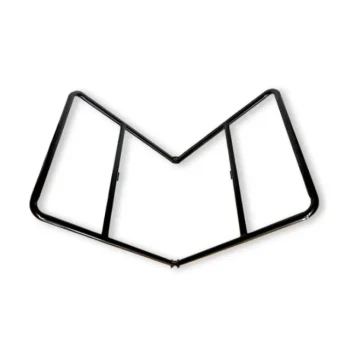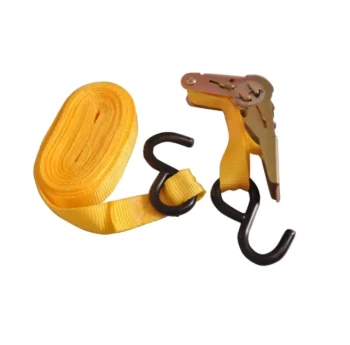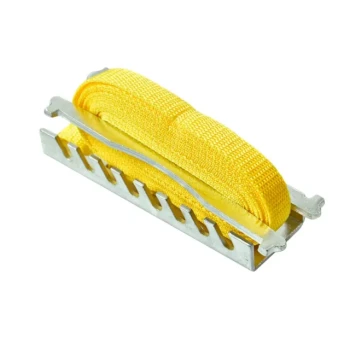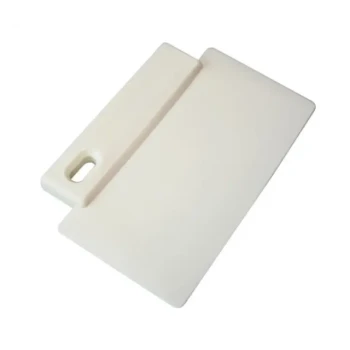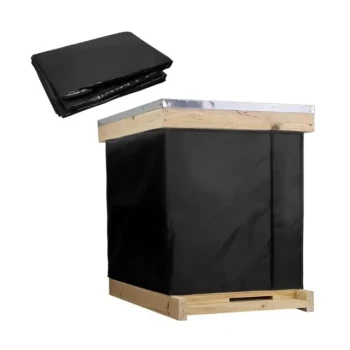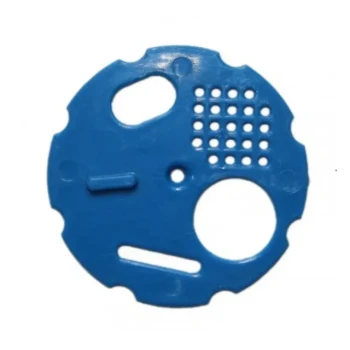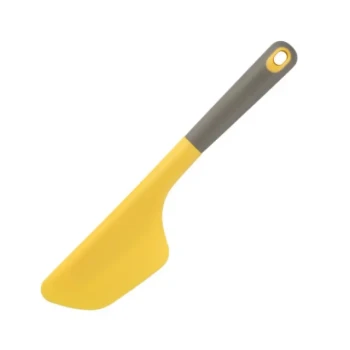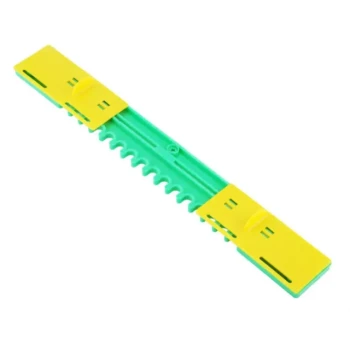Splitting a beehive is the fundamental process of creating two viable colonies from a single, strong one. At its core, you are moving a specific combination of frames—containing bees, developing brood, and food stores—from an established parent hive into a new hive box, often called a nucleus hive or "nuc."
The central challenge of splitting a hive is not simply dividing the bees, but ensuring both the original hive and the new split possess the three critical resources for survival: an adequate population, sufficient food stores, and a clear method for having a productive queen.

Why Split a Hive? The Strategic Goals
Before performing a split, it's crucial to understand the objective. This process is a powerful tool for achieving several beekeeping goals.
To Prevent Swarming
A strong, overcrowded hive will naturally prepare to swarm, a process where the old queen leaves with half the bees. A split preemptively relieves this congestion, satisfying the colony's reproductive instinct in a controlled manner.
To Increase Your Number of Colonies
For beekeepers looking to expand their apiary, splitting is the most sustainable and cost-effective method. It allows you to create new hives from your own proven, locally-adapted bee stock.
To Mitigate Varroa Mites
Splitting can create a "brood break"—a period where no new bees are developing. Since Varroa mites reproduce within capped brood cells, this interruption in the bees' reproductive cycle also breaks the mites' life cycle, significantly reducing their numbers.
The Three Pillars of a Successful Split
A new colony cannot survive without a balanced allocation of resources. Every frame you move should serve a specific purpose.
Pillar 1: Frames of Brood
Frames containing eggs, larvae, and capped brood are the engine of the new colony. They ensure a continuous supply of new bees will emerge to replace the older ones, building the hive's population.
Pillar 2: Frames of Food
A frame of honey provides the immediate energy (carbohydrates) the bees need, while a frame of pollen offers the protein required to feed developing larvae. Without these food stores, the new colony will quickly starve.
Pillar 3: A Critical Mass of Bees
The frames you move must be covered with enough nurse bees to care for the brood and enough forager bees to begin collecting resources. A split with too few bees cannot regulate temperature or defend itself.
The Core Steps of a Hive Split
While methods can vary, the fundamental process follows a clear sequence.
Step 1: Assess the Parent Hive
First, ensure the original hive is strong enough to be split. A healthy, populous colony covering at least eight to ten frames in a standard Langstroth box is a good candidate.
Step 2: Prepare the New Hive Box
Set up your new equipment (typically a five-frame nuc box) next to the parent hive. This minimizes the distance you have to carry frames loaded with bees.
Step 3: Transfer the Key Frames
Carefully move the required frames from the parent hive to the nuc. A common configuration is two frames of brood, one frame of food (honey/pollen), and enough bees to cover them.
Step 4: Solve the Queen Equation
This is the most critical step. Both hives must end up with a queen.
- Method A (Walk-away Split): If you move the old queen to the new hive, the parent hive will use fresh eggs to raise a new one. Conversely, if you leave the queen in the parent hive, the new split must have frames with fresh eggs to raise its own queen.
- Method B (Introduce a Queen): A faster and more reliable method is to introduce a mated queen you have purchased or raised into the queenless half of the split.
Understanding the Inherent Trade-offs
Splitting a hive is a powerful technique, but it is not without risks that require careful management.
Weakening the Parent Hive
A split temporarily reduces the population and foraging power of the original hive. Performing a split too early in the season or taking too many resources can compromise its ability to produce honey or defend itself.
The Risk of a Queenless Colony
If the queenless half of your split fails to raise a new queen, or if she is lost during her mating flight, that colony is doomed. You must be prepared to monitor the new hive and intervene if queen-rearing fails.
Dependence on Timing
The success of a split depends heavily on weather and resource availability. There must be enough pollen and nectar available for both colonies to build up successfully.
Making the Right Choice for Your Goal
Your reason for splitting should dictate your exact method and timing.
- If your primary focus is swarm prevention: Perform the split as soon as you see signs of swarm preparation, such as the creation of queen cups or cells, to relieve colony congestion immediately.
- If your primary focus is making increase: Use a mated queen for your split to ensure the new colony can build up its population as rapidly as possible with no lag time.
- If your primary focus is mite control: A "walk-away" split is ideal, as the new queenless colony will have a natural 24-day brood break while it raises a new queen.
By strategically dividing your colonies, you shift from simply keeping bees to actively managing them for health and productivity.
Summary Table:
| Key Component | Purpose in the Split |
|---|---|
| Frames of Brood | Ensures a continuous supply of new bees to build population. |
| Frames of Food | Provides immediate energy (honey) and protein (pollen) for survival. |
| Adequate Bees | Covers brood, regulates temperature, and forages for resources. |
| Queen Solution | Establishes leadership via a new raised queen or introduced mated queen. |
Ready to implement these techniques with professional-grade equipment?
As a commercial beekeeper or distributor, the success of your splits depends on reliable, high-quality supplies. HONESTBEE specializes in wholesale beekeeping equipment and supplies designed for the demands of commercial apiaries. We provide the durable hive boxes, frames, and tools you need to manage your colonies effectively and scale your operations.
Let's discuss how our wholesale-focused solutions can support your hive management goals. Contact our team today for pricing and to find the right equipment for your apiary.
Visual Guide
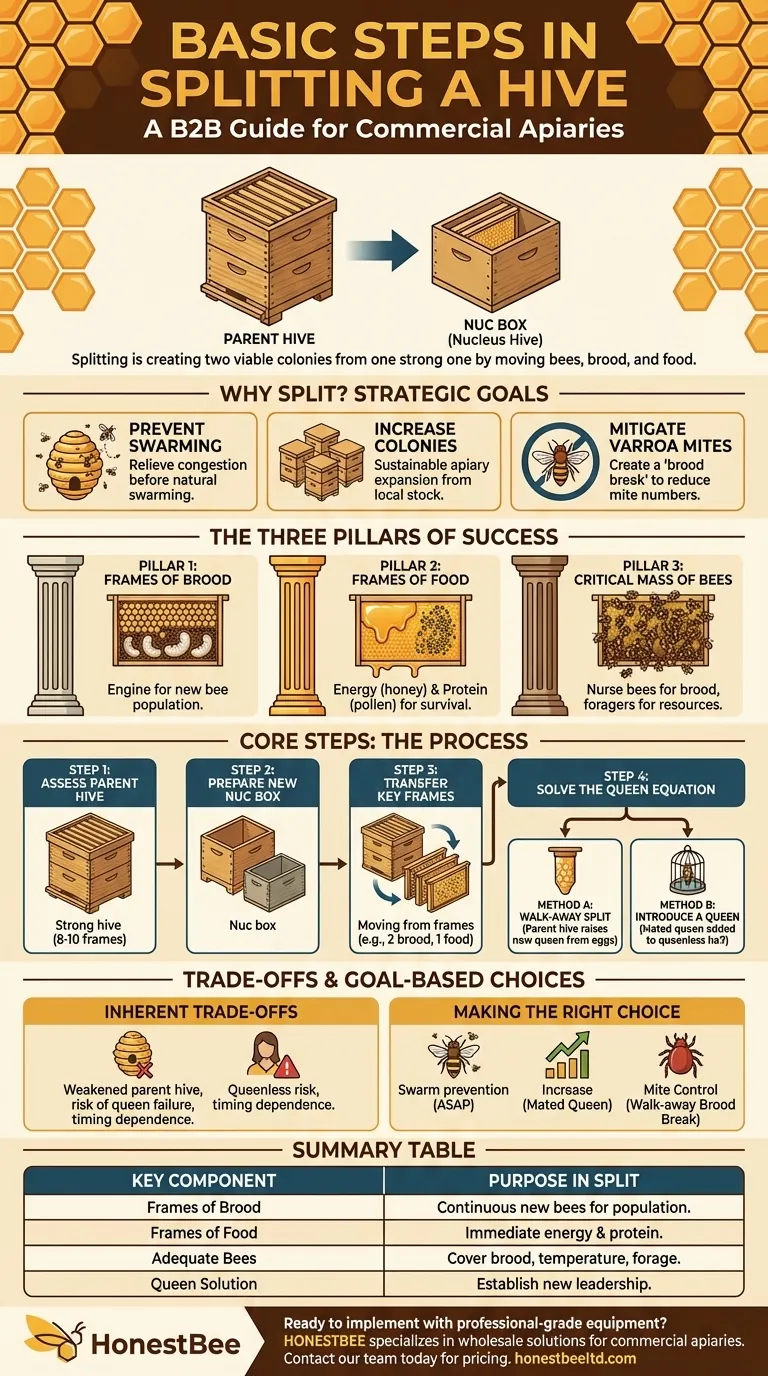
Related Products
- Wholesales Dadant Size Wooden Bee Hives for Beekeeping
- Ergonomic Two Person Foldable Hive Lifter
- Versatile Ratchet Hive Strap with S-Hooks for Secure Fastening
- Professional Galvanized Hive Strap with Secure Locking Buckle for Beekeeping
- Professional Engraved Round Hive Number Tags for Beekeeping
People Also Ask
- What is the best place to keep bees? Find the Perfect Apiary Site for Your Hives
- What should you do if you find an ant nest near your beehive? Essential Strategies for Hive Protection
- What types of products are available for beekeeping needs? Essential Equipment for Apiaries & Distributors
- What should beginners consider when purchasing beekeeping equipment? A Guide to Essential Starter Gear
- What is beekeeping equipment? Essential Tools for Commercial Apiaries & Distributors

